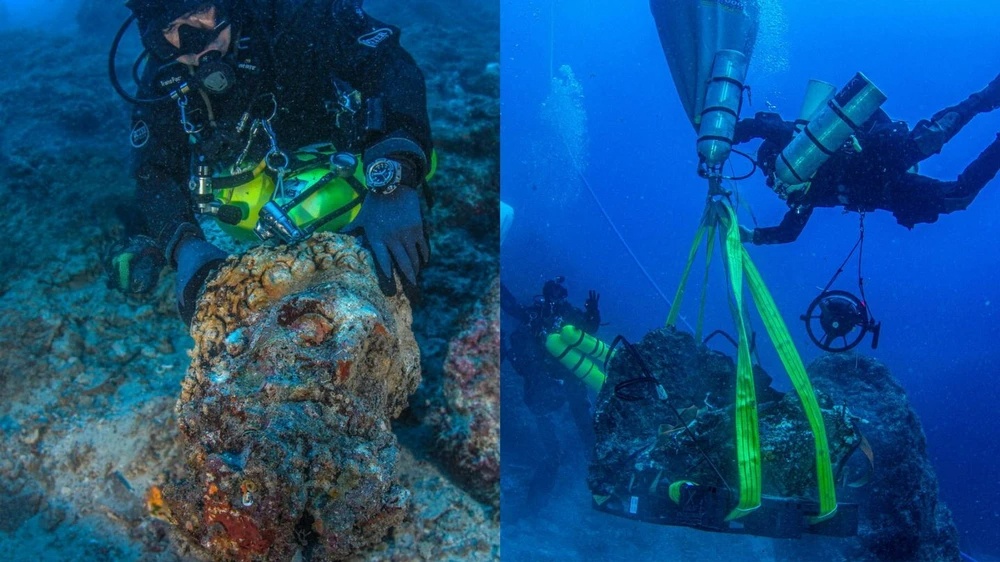Amazing finds are emerging from the shipwreck that carried the Antikythera Mechanism, the world’s oldest analog computer.
Archaeologists have discovered a huge marble head, human teeth, and other artifacts from the same 2,000-year-old shipwreck where the mysterious Antikythera Mechanism—the oldest known analog computer—was found more than a century ago, according to an update from the team that is exploring the ancient underwater site.
The Antikythera Mechanism has dazzled researchers and the public alike since divers first extracted it from the remains of a sunken Roman cargo ship off the coast of Antikythera, a Greek island, in 1901. The artifact provides a model of the solar system that acted as a sophisticated calendar, predicting the times of astronomical events, like eclipses, as well as cultural touchstones, such as the Olympic games.
Researchers across the decades have managed to piece together many of the Mechanism’s inner workings, but it wasn’t until 2012 that divers returned to the shipwreck to search for additional clues. The mission, called “Return to Antikythera,” is led by the Hellenic Ephorate of Underwater Antiquities, and has already found bronze artifacts, human remains, and other tantalizing objects in the submerged wreckage.
On Sunday, the team announced initial findings from its most recent survey, which ran from May 23 to June 15 and exposed an entirely new section of the wreck.
“The 2022 field research included the relocation of selected sizeable natural boulders that had partially covered the shipwreck area during an event that is under investigation, weighing up to 8.5 tons each; their removal gave access to a formerly unexplored part of the shipwreck,” said the researchers in a blog post.
“The exact position and the archaeological context of each finding have been precisely documented during excavation,” added the team, with an aim “to precisely reconstruct the disposition of the wreckage and the conditions of the sinking of the ship sometime during the first half of the 1st century BC.”
Perhaps the most striking artifact recovered is a larger-than-life-size marble head, presumed to represent the mythological Greek hero Herakles (Hercules), which probably belongs to a headless statue that was brought to the surface by sponge divers in 1900. The expedition also emphasized the value of two human teeth found in the wreckage, which researchers plan to mine for insights into their human sources.
“Important information is expected to be extracted from two human teeth, discovered in a solid agglomerate of marine deposits together with fragments of copper, wood and other materials typical of a maritime disaster,” the team said in the blog post. “Genetic and isotopic analysis of the teeth might be useful to deduce information on the genome and other characteristics relevant to the origin of the individuals they belonged to.”
The discoveries are part of a new phase of the Return to Antikythera expedition, coordinated by the University of Geneva, that will run to 2025. The researchers hope that the project will continue to shed light on the cultural context surrounding the mysterious Antikythera Mechanism, while also potentially unearthing items that might be on par with the ancient computer.
“Since the ship was transporting the highest quality of luxury goods, there is a very real possibility of unimaginable finds, similar in importance to the Mechanism,” according to the expedition website. “The Antikythera Shipwreck holds more secrets.”


